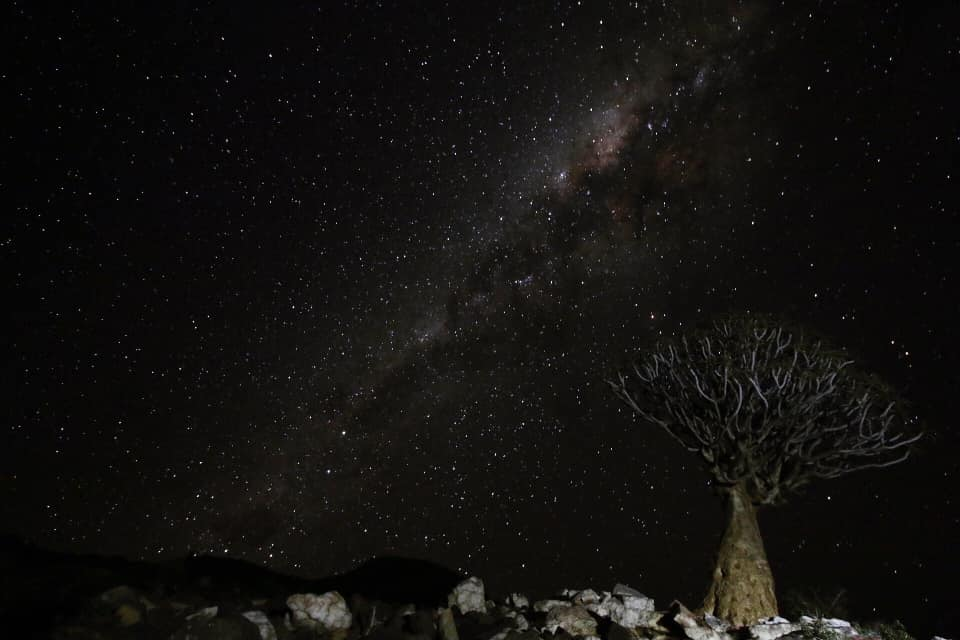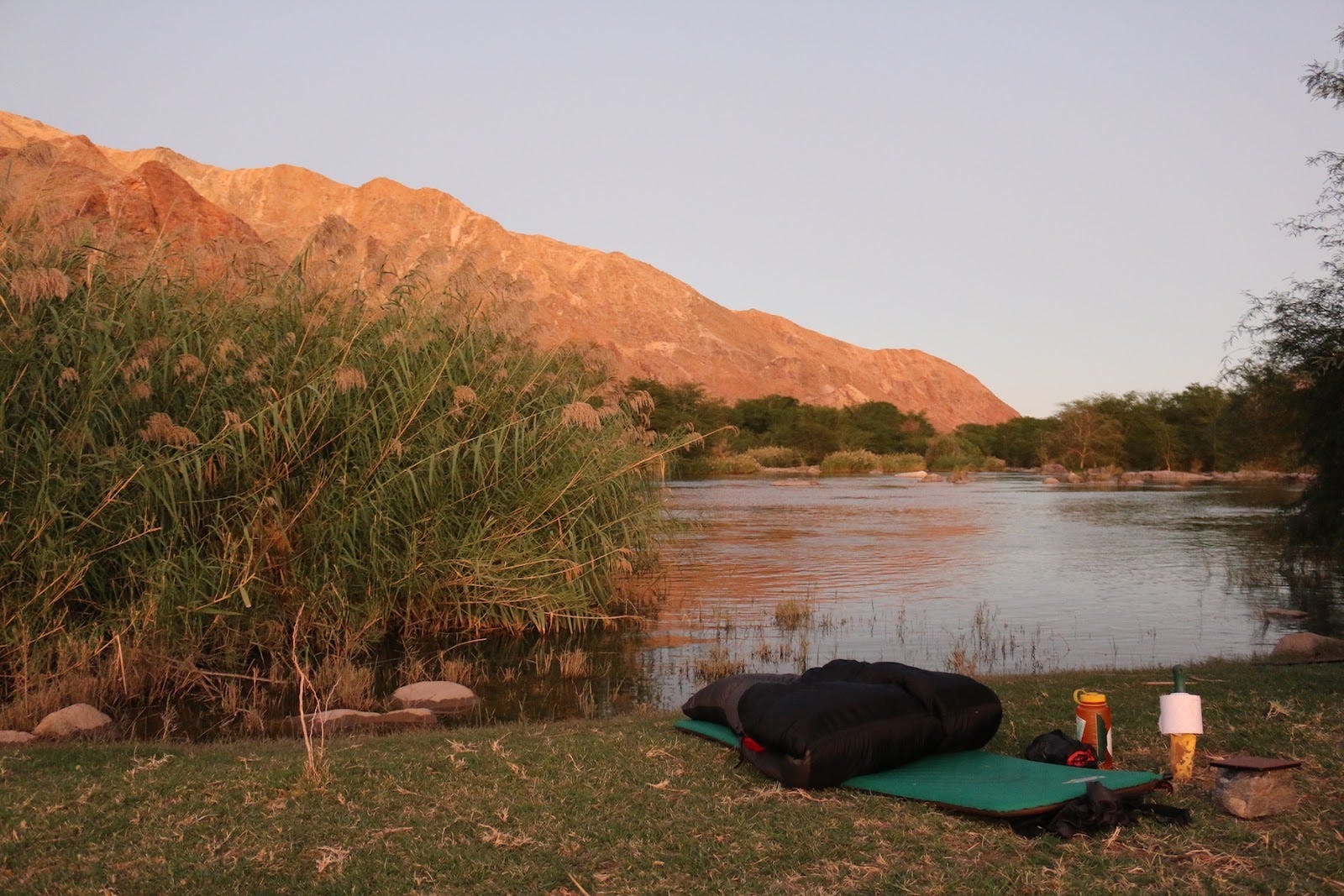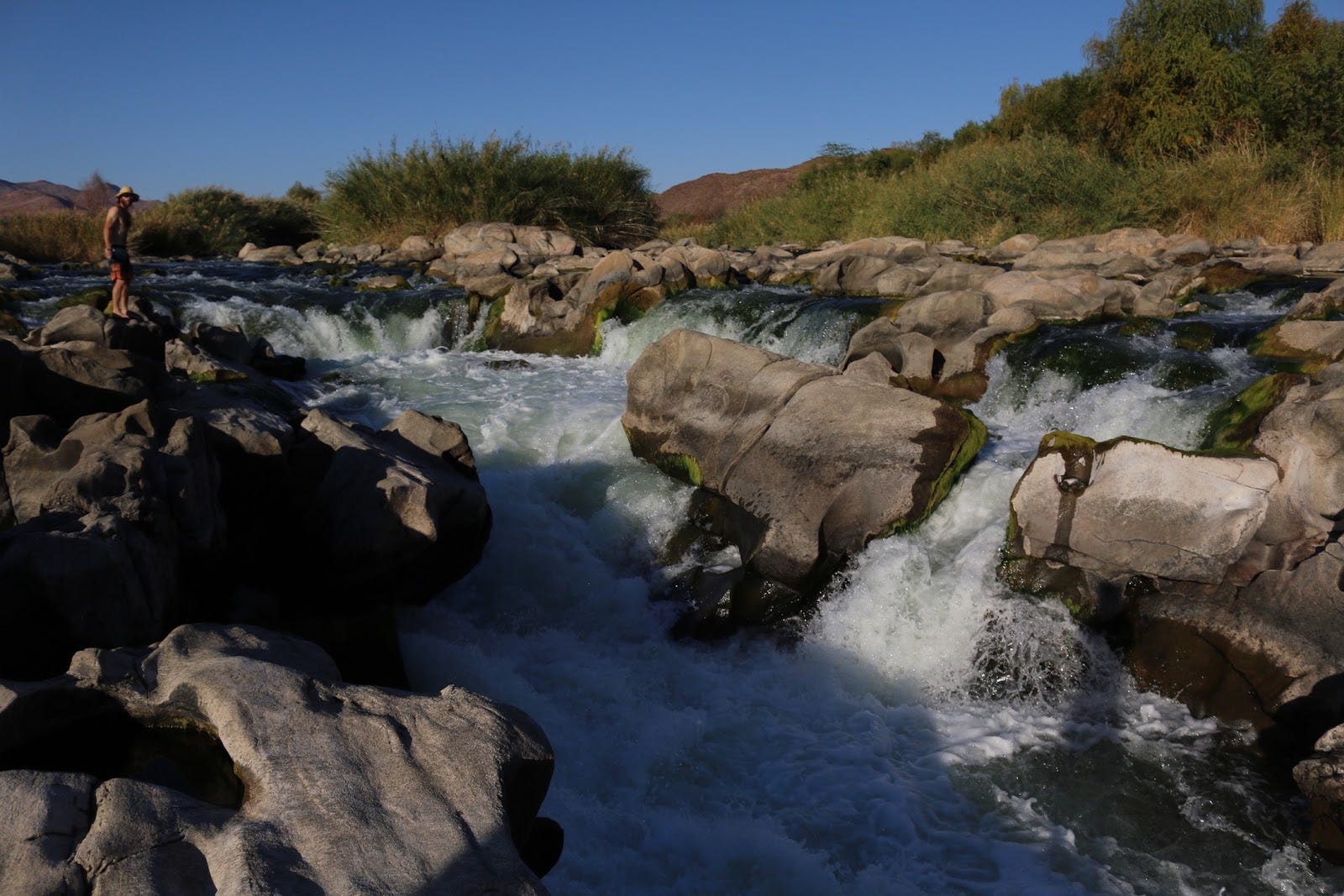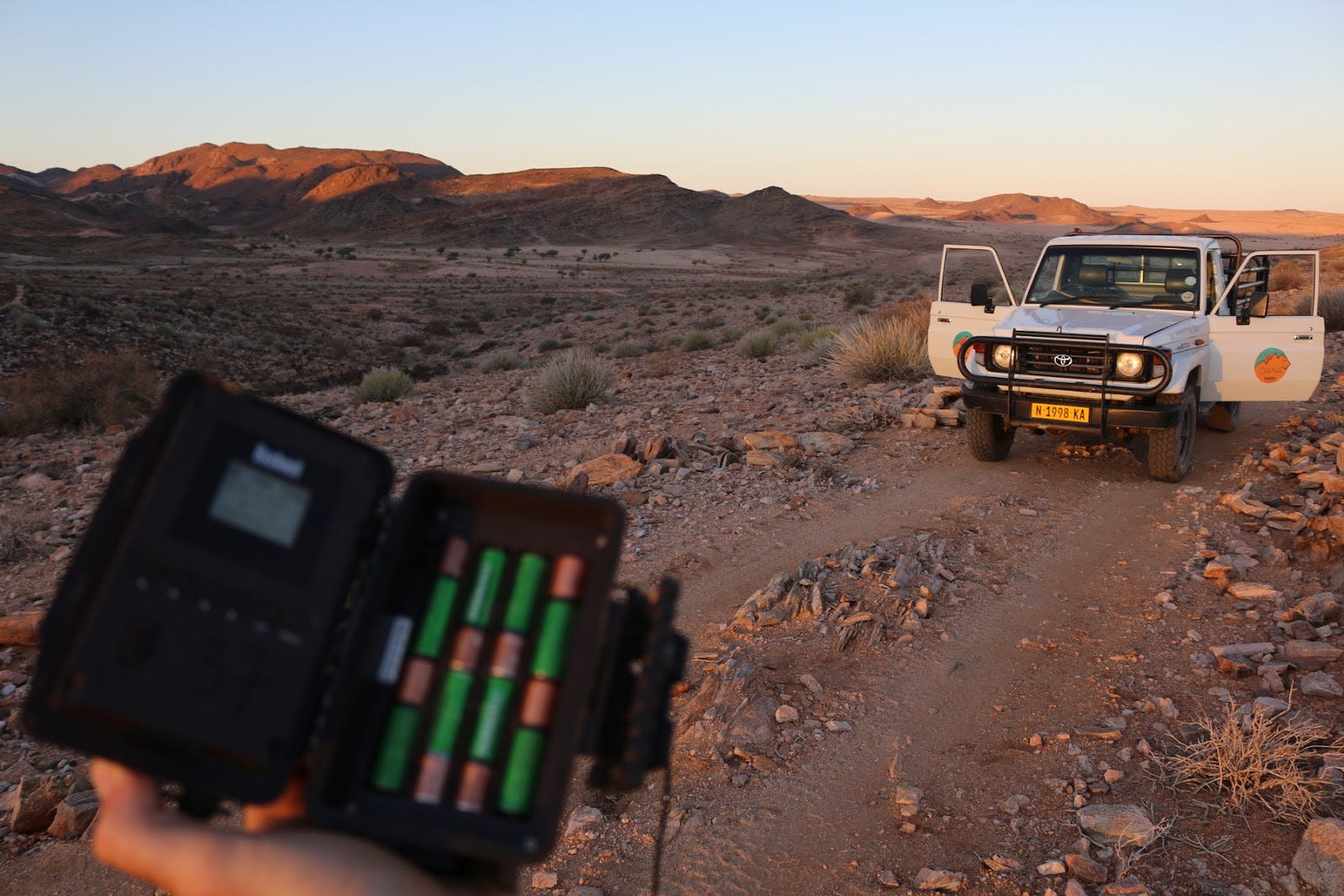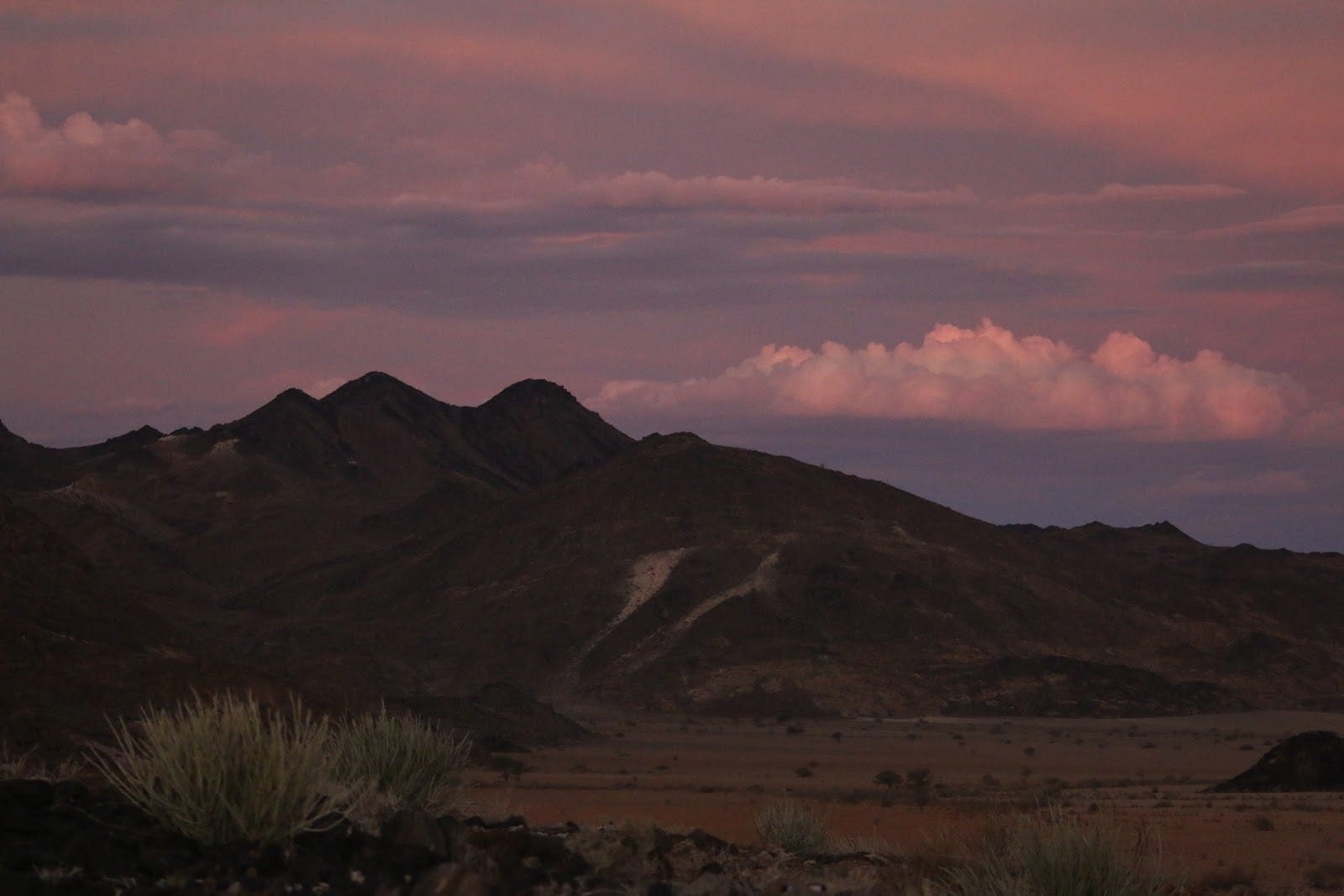Creating space for wildlife to return and resurrect its natural rhythms
Rio Button
August 27, 2020 · 5 min read

Before foreigners erected fences, animals were free to move to where rain had recently fallen in the Kalahari desert, one of the driest places on earth. Here, rainfall is rare, sporadic, and concentrated in small areas. Some animals would follow the rain to nibble the new plant growth that emerged from the red sand, the growth of which having been stimulated by the brief sprinkle of water. Other animals would, in turn, follow those plant nibbling creatures to prey upon them. Freedom of movement was critical in allowing these arid-adapted creatures to eke out an existence in the harsh desert environment.
Oryx in the red dunes of the Kalahari desert, Southern Namibia.
Conservation organisation, Oana, is taking down fences and rewilding trophy hunting and livestock farming areas in Southern Namibia. This allows natural systems to heal, enabling wild animals including Springboks, Leopards, and Brown Hyenas to move freely between regions, once again following the fickle rains. Rewilding, by definition, helps nature to recover, gives space back to wildlife, and returns wildlife to the land. It enables the recovery of ecosystems and revives their life-supporting functions. Oana is an agent of rewilding and revival.
“Oana” means exploration in Nama, the language of indigenous people of the region. Oana’s nature reserve in Southern Nambia, is a true frontier. The extensive reserve is largely uncharted and encompasses over 110,000 acres of land, which means there’s lots of exploring yet to be done. Most of this exploring must be done on foot, as large expanses of the reserve lack roads.
5000 star hotel
Conor Eastment, Oana’s research coordinator, tells me about his nights, in what he calls, “the 5000 star hotel.” He’s referring to the nights on his multiday hikes to explore and document the types of plants and animals on the reserve where he sleeps under the stars. The area is so remote that light pollution is nonexistent. Once the sunset colours fade, the most phenomenal starscapes are revealed. He hikes to document where, what, and how many different types of plants and animals inhabit the reserve. To record the presence of shyer species that hide away from humans or that are nocturnal, Eastment sets up motion-activated camera traps. With these, he has documented otters, water mongoose, aardvark, genet, caracal and black necked spitting cobra.
Here is a camera trap photo of a leopard on Oana, using camera trap photos, 17 individual adult leopards and four cubs have been identified.
Eastment is on a mission to build a baseline dataset of the diversity and abundance of animals and plants on the reserve. This will allow him to track the progress of Oana’s rewilding and ecosystem recovery by the amount and diversity of plants and animals.
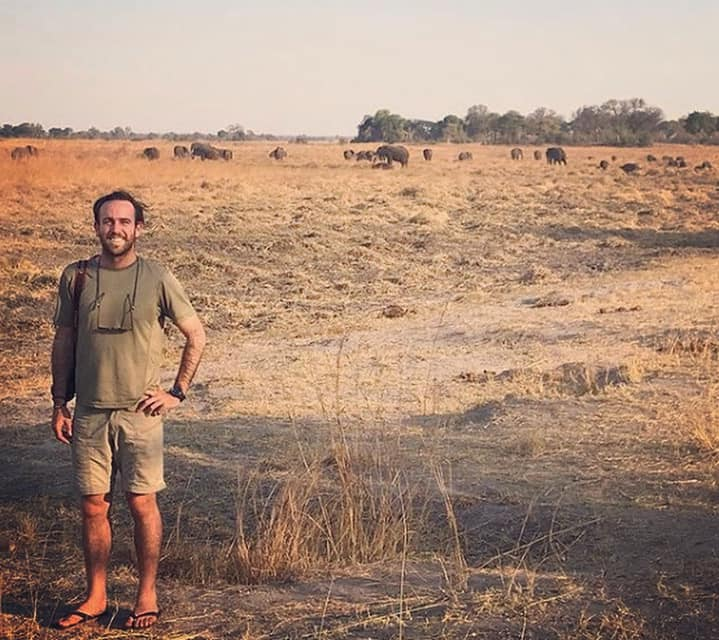
An explorer of nature and perspectives
Eastment thrives exploring nature but also new perspectives on topics he thought he already knew everything about. Engaging with local people, landowners and renown scientists, Eastment understands the context of their opinions and is intrigued by their perspectives. His enthusiasm for exploring nature and people’s perspectives, as well as his devotion to conserving wild spaces is contagious. So much so, that during my Zoom interview with him I started scheming how I could find a way to go visit Oana. The Covid-19 induced travel restrictions that are currently in place are hindering my plans.
Oana partners with Wildcards!
New wildcards will be launched to raise funds for Oana! Each card has a captivating, fact-filled story about an individual animal Oana researches and protects. You’ll be able to publicly buy one of these wildcards online, which will make you the guardian of that wildcard animal. When you buy a wildcard, you must set the price you are willing to sell it for. Every month, as the guardian of a wildcard, you will give a specified portion of the selling price you set, to that animal’s representative conservation agency, in this case, Oana. At any point, someone can buy the wildcard from you, at the selling price you specified. When someone buys the wildcard from you they must set a selling price. The new guardian of the wildcard is then responsible for giving the new monthly subscription. And so the cycle continues to generate funds.
Wildcards is ecstatic about connecting funders with conservation agencies having a real world impact on the protection of wild animals.
Also read:
Wildcards: an unprecedented means of funding conservation
Follow Wildcards on twitter: @wildcards_world
Follow Wildcards on Facebook: @wildcards.conservation
Join us on Discord
Rio Button
Dr Seahorse’s journey
From unravelling seahorses’ secret sounds to safeguarding the habitat of these little super dads. St...
Rio Button
June 29, 2022 · 5 min read
What wild animal leaves teddy bear footprints behind?
Photo by Helena Atkinson. Photo by Helena Atkinson. Here are some clues… Using their sticky tongues,...
Rio Button
February 07, 2022 · 9 min read
Tech innovation: Solving wildlife conservation's greatest challenge
Tech start-up Wildcards has raised over 130,000 USD for conservation organisations around the world ...
Rio Button
August 24, 2021 · 7 min read
Curious creatures under persecution
From having a deep fear of sharks to defending them. Reluctant, Grant Smith tumbled backwards off t...
Rio Button
July 26, 2021 · 8 min read
NFT Postcards for a purpose
NFT Postcards for a purpose A limited edition set of NFTs has been created in partnership with the T...
Jason Smythe
April 01, 2021 · 2 min read
Do you Care for Wild?
As rhino poaching soars, what happens to the orphaned rhino calves left behind? An orphaned baby bla...
Rio Button
February 24, 2021 · 7 min read
Where the wild things roam
South Africa’s most Endangered carnivore can’t be kept in by fences. Wildcards chatted to the man re...
Rio Button
February 23, 2021 · 10 min read
Rumours of an elusive feline in the mangrove forest
While collecting data in San Pedro de Vice Mangroves, in the Sechura desert, final year biology stud...
Rio Button
December 23, 2020 · 8 min read
South Africa’s last remaining white shark stronghold under threat
The Oceans Research Institute battles the impact of demersal longline fishing to safeguard great whi...
Rio Button
November 25, 2020 · 8 min read
Malaysia has marine mammals?
90% of Malaysians don’t know there are dolphins and whales in Malaysian waters There are at least 6 ...
Rio Button
November 17, 2020 · 9 min read


